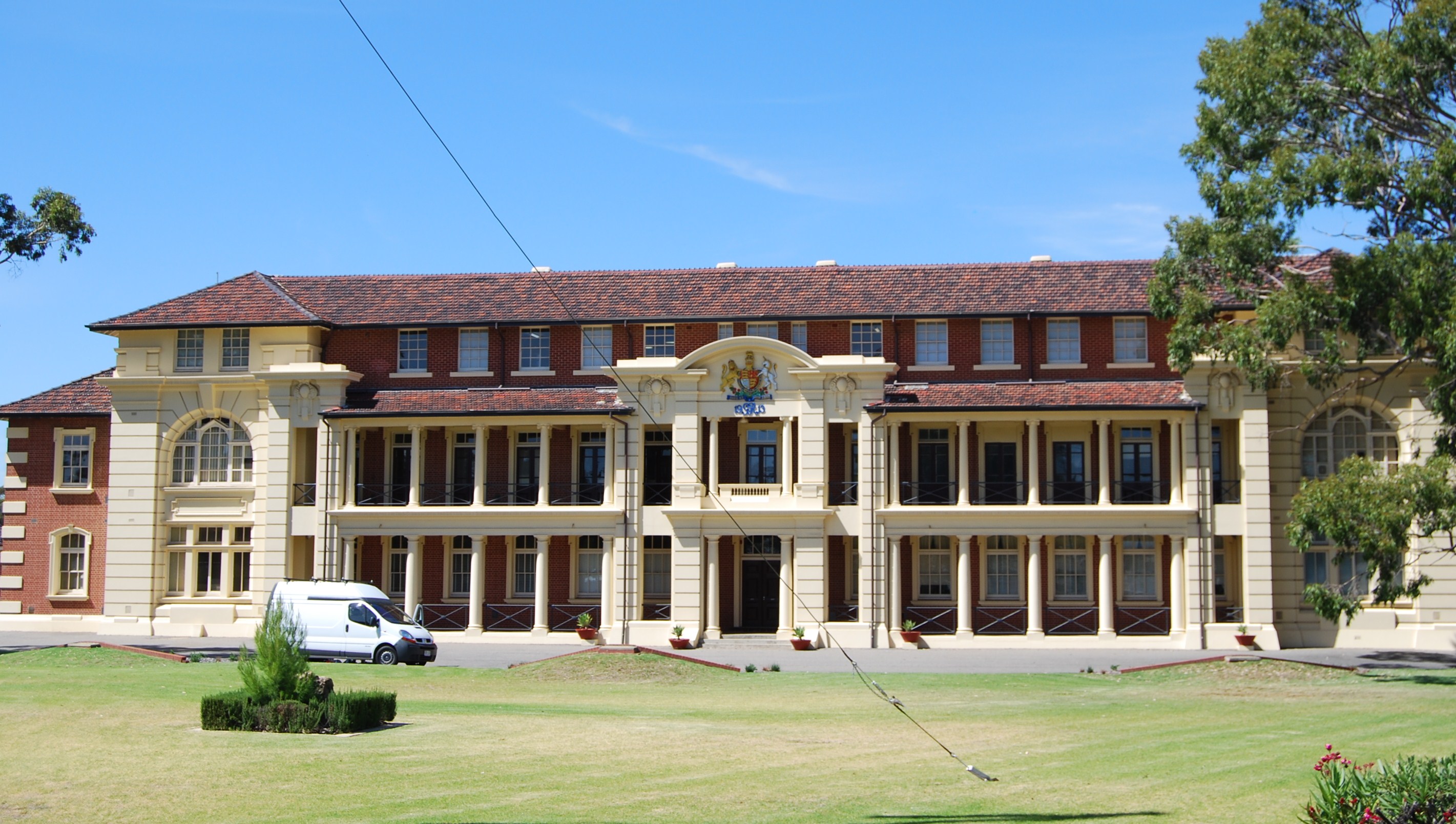|
|
||
|
||
|
Privacy Policy | Editorial Policy | Profit Policy | Join the Association | List of Members | Contact us | Index | Links |
||
|
Back Go to page: 1 2 3 4 5 6 7 8 9 10 11 12 13 14 15 16 17 18 19 20 Forward
|
||
|
My Story.
|
||
|
|
||
|
Ian “Tiny” Ashbrook.
In Part 1, Ian Ashbrook and his family had just arrived in Malaysia (1981) in the midst of the pre monsoon temperatures and extreme humidity, coupled with the less than exotic atmosphere of the wet fish market in the middle of Penang. He then took command of No 478 Sqn as well as being the Base Engineering Officer at Butterworth.
Taking over from Chummy Wade (Right – AWM pic) as CO of 478 Maintenance Squadron at Butterworth, Malaysia was certainly stepping into some big shoes. Chummy was a larger than life character having been an RAF Halton apprentice who had later been recruited into the RAAF as an engineer officer. He had commanded a number of large organisations in the RAAF including 482Sqn at Amberley with the F111 and 478Sqn at Butterworth with the Mirage lll in addition to being one of the first to serve in Vietnam. He could be direct and confronting which is probably why he never served in Canberra; but, he had a wealth of experience and knew how to lead an organisation. So, I arrived in Butterworth and set about my primary task to plan the closure, while commanding a large squadron (of over 400 including locally engaged civilians (LECs)) and all of this had to be done sensitively taking into account the considerable political implications in a foreign country.
The first challenge came with the Mirage when loctite was applied incorrectly to some wing bolts across the fleet and this migrated to some control actuators and I had to advise that we cease flying until we could work out the implications. This took some time and I was under considerable pressure to get the fleet back flying. This was a local problem with only the Butterworth aircraft affected; but, the airworthiness considerations were significant and I was relieved when we started to get aircraft out of the recovery program and I could get the CO’s of 3 and 75 Sqn, let alone the base commander AirCdre (later AVM) Bernie Reynolds, off my back. However, this was closely followed by a high speed fatal Mirage crash at night into the sea to the N of Butterworth (A3-32 piloted by FlgOff Cliff Simmonds) with no apparent cause. I was fortunate again to have on staff SqnLdr (later WgCdr) Wal Nelowkin who had preceded me into Butterworth. Wal’s painstaking efforts in coordinating the recovery of aircraft remnants from the sea and assembly of the pieces in classic aircraft accident investigation manner on a wire frame in a hangar went a long way to supporting the conjecture that the aircraft probably had not had a problem. And, just to add variety to the day I had drug accusations against several members being investigated, some serious impropriety by both a member and separately a wife resulting in two families being sent back to Australia and the recovery of a member detained in Thailand following a motor bike incident.
During the handover, Chummy opened the office safe and showed me some RM20k+ (approx $A10k) in cash which had been accumulated over the years and used, to ‘assist’ members who got into ‘trouble’, on a repayment basis. I had envisaged a member who had overcommitted to a local door to door salesmen of everything from furniture through to rental cars; but, the first use of the funds was to despatch our SqnLdr service policeman to Phuket, with the money to negotiate the release of a member being detained by Thai police, following a motor bike accident. I soon learnt that in Thailand, right was largely determined by who could pay, which meant that if property was damaged or a person injured then inevitably, even if innocent, the only way forward was with money.
And this wasn’t the only source of funds. We had section funds, group funds, club funds etc etc which had accumulated over the years and, after I had become aware of them, added further to the list of things to be addressed during the run down and closure. In the end, some of the funds were expended on an appropriate Squadron closure function; but, most were donated in various forms to orphanages and other worthy local support groups around Penang.
As I
arrived, plans were being implemented to close Transport Support Flight
(TSF) which operated Dakota and
The other pilot at Butterworth was the Senior Medical Officer (SqnLdr Dennis Gardiner). Dennis had flown Caribous with me at Richmond in 1969, had completed a tour in SVN and had around 4000 hours on the Caribou. After Vietnam, he had been encouraged to resume the medical studies that he had deferred when he joined the RAAF. So, it was that Dennis and I undertook a quick Caribou refresher back at Richmond and Stew, who was a Qualified Flying Instructor (QFI) and a Mirage Fighter Combat Instructor (FCI) also became Caribou Captain qualified. This of course meant that the FltLt detachment commander had two GpCapts and a SqnLdr as his copilots; but, FltLt Julian Bowditch (later with Qantas) initially and FltLt Darryl Redding, a former F111 navigator before doing a pilots course, both handled the role with aplomb. Sadly Darryl passed away last year up on the Sunshine Coast.
|
||
|
|
||
|
L-R: GpCapt Ian Ashbrook, GpCapt Stewart Back, FltLt Darryl Redding, SqnLdr Dennis Gardiner, Sgt Brett Tuohy. More.....
|
||
|
Be careful when you follow the masses. Sometimes the "M" is silent! |
||
|
|
||
|
Dennis and I also initially had some fun when we were flying together especially with ‘new’ passengers. We’d get the Loadmaster to tell the passengers that ‘Caribou pilots are in short supply so today we’re flying with the Base Engineering officer and the Senior Medical Officer’. One of us would then call from the cockpit to the Loady asking could he find a Flight Manual so we could work out what how to start the beast’. However, this wore thin with some nervous passengers and after a complaint to HQ we desisted forthwith.
The Caribou
was mainly used to support the Mirage detachment at Tengah (Singapore)
which was a 2.5 hour flight from Butterworth and we noted that the
aircraft main wheel tyres suffered from high wear rate in the centre of
the
Planning the closure of the squadron was a major task with some 400 RAAF (plus families) across the three squadrons. Withdrawal was compounded by having to repatriate the RAAF families to Australia in an orderly fashion while trying to ensure that all who were posted to Butterworth managed to get close to a full tour. We also had to maintain flying operations.
Initially much of the planning was coordinated by my offsider WgCdr Peter Coutts and when Peter returned to Australia, this was taken over by SqnLdrs Wal Nelowkin and Les Armstrong. Fortunately, the Director of Postings Airmen (DPA) at the time (GpCapt (later AirCdre) Blue Connelly an administrative officer and former WW2 pilot) could see that this would be best managed on site looking at Butterworth as a whole and so allowed us to plan manning such that individuals could transition from 478 Sqn to 75 or 3 Sqn and when 75 Sqn withdrew, either went to Darwin with 75 or transitioned to the last Mirage squadron at Butterworth, 3 Sqn.
But RAAF personnel were only part of the equation. We had some 80 LECs, many of whom had transitioned from RAF to RAAF employment and had been employed for decades. The LECs had a strong union and our actions were also being closely watched by the Malaysian government so separation negotiations were very sensitive with redundancy payments very carefully negotiated to avoid any misunderstandings. Notwithstanding, we achieved the target of disbanding 478 Sqn on 31 Oct 1983 and all personal posted to Butterworth completed a full, or close to, tour in Malaysia.
478Sqn operated the air-ground weapons range on Song Song Island about 40km N of Butterworth. The range consisted of three islands of which the largest, Bidan, was used as an accommodation site about 4km from Song Song. We kept Bidan manned 24 hrs a day for security and when not being operated (normal ops were Mon morning to Fri afternoon), security was provided by the RMAF and the RMAF Base Commander COL Abdul Ghani Abdul Aziz (later LtGen and CAF) asked me if somehow this could be ameliorated. Armament Section in fact did this in part by making the accommodation available to armament personnel to use at weekends, if they wished; but, only did this occasionally. I proposed, much to the chagrin of the armourers, that we open Bidan up to all personnel for the weekends managed by Armament Section. Bidan offered basic but comfortable accommodation with a good safe sandy beach, plenty of fishing and generally a very attractive free weekend holiday and was booked out month by month.
|
||
|
|
||
|
478 Sqn, 1983.
|
||
|
So Ghani was happy and we provided a great respite location for our people in the area. With the benefit of 35 years hindsight I now wonder at the safety aspects as Bidan was isolated with no way off once the ferry boat had departed and there were very limited radio communications back to Butterworth. So, if any of the known pirates in the area or local fishermen had chosen to come onto the island there was little that occupants could have done and it could have been disastrous; but, fortunately, nothing like this happened.
|
||
|
|
||
|
Handover of the Song Song Range complex to the RMAF with Col Abdul Aziz Ghani (later LTGEN and Chief of RMAF) accepting on behalf of the RMAF.
|
||
|
Have you ever listened to someone for a while and wondered "who ties your shoelaces for you?" |
||
|
|
||
|
Everything that came onto Bidan had to be shipped up on a ferry, loaded onto a dinghy and man handled up the beach so replacing items like refrigerators etc was a major task and when it came to hand the range complex over to the Malaysians I proposed to the ‘accountants’ in Canberra that we just write all of the items off and hand them over; but, this required considerable convincing. The written down value was negligible but ‘rules are rules’. Fortunately, sense prevailed and we handed it all over; but, the Malaysians then had ‘purify’ the site to satisfy halal requirements and because prohibited items like pork had been in the fridges, cooked on the stoves, washed in the sinks etc these items either had to be removed or cleansed by a religious Bomo, which took ages to accomplish. Finally, the range was brought back to service and to be used by the RAAF, as in Australia, required a suitably qualified pilot to be on site to act as Range Safety Officer. The first RSO, a ‘boggy’ Mirage pilot was duly despatched for the week and on day two proceeded to start the day by cooking his breakfast of bacon and eggs in the kitchen, which brought the whole complex to a halt for several weeks while the ‘cleansing’ process was redone!!
When I arrived at Butterworth I found one of the officers in 478 was Charlie Walford, then a Flt Lt. I had heard of Charlie over the years; but, our paths had never crossed. Despite the rank difference, Charlie and I hit it off immediately. We were of similar age, size and temperament, with children participating in the range of activities around Penang; but, most of all we had similar interests, particularly in cars. Charlie was also responsible for the maintenance of the Caribou.
When the Butterworth posting came out of the blue, I had to decide whether to keep the car that we had taken delivery of from the factory in Stuttgart and driven to London (we did this enroute to the UK rather than returning from the UK and this was unusual and caused some consternation in the High Commission at the time!!) or look at selling and perhaps replacing with an import into Malaysia. The car sold quickly in Canberra providing more than enough for an equivalent new replacement to be imported into Malaysia; but, that was the easy bit. For many years, purchasing duty free cars in Malaysia had been the norm for those so interested; but, by 1981 no one had imported a car for many years and the bureaucratic process to achieve this had not been exercised in that time. Like other former British colonies, Malaysia took British bureaucracy and turned it into an almost incomprehensible art form. Just to make it more difficult, all documentation was in Bahasa Malay so I had to find an agent to negotiate the complex framework and this came in the form of a well known ‘insurance’ agent by the name of Mr Maniam. Many people who had a tour in Butterworth will have known Maniam.
One of the requirements was a lengthy import document of which I had to have 48 original copies, which took ages to hand complete, the majority of which were sent to Customs and Excise in Kuala Lumpur. The car shipped from Germany through the main Malaysian port of Port Klang and arrived on the Butterworth wharves on the Fri leading into the annual Hindu festival of Deepavali. Maniam, although Indian and anxious about his Deepavali commitments, insisted that we get it off the wharves asap to avoid theft or damage and arranged to get final clearance on the Sat which I was very pleased to support. However, on the Sat, Maniam rang me about 08.30 to say ‘we have a problem. Please come to the Butterworth Custom House with a driver and in uniform wearing ‘gold’ hat’. Quickly thinking how to do this, I rang Charlie asking him to help. So with Charlie driving we arrived at Customs to be met by Maniam who asked me to accompany him, let him do all the talking; but, ‘look stern and nod when he nodded’. We then proceeded with this act at various offices as we made or way up the building. Finally, at about noon we were ushered into what was clearly the boss. Maniam went through the act and in frustration, having gathered what the problem was, I leant over boss’s desk, pointed at various lines on one of the copies of my ‘original’ import document and opined that clearly the officer who had completed it in KL had ticked a wrong box in error and there wasn’t really a problem as surely he could see the error. Boss looked at me and agreed but pointed out that he couldn’t change the document as it would have to go back to KL to be corrected. It didn’t help either that the error had been made by a female officer.
Fortunately,
and perhaps uncharacteristically, I had kept my cool through the several
hours of this charade so, thinking quickly, I sat down and proposed to
‘boss’ that he release the vehicle to me as a senior and honourable RAAF
officer on my personal guarantee that I would take it directly to the
RAAF Base and secure it to remain untouched while the documentation was
fixed and surprisingly to me and especially to Maniam he agreed. But
that was not the end. The port was closing at 2pm, until the following
Tue, for Deepavali and we had to get the car started and off the wharf
in the next hour and a bit, which sounded easy enough; but, when we got
to the car it wouldn’t start because it had no fuel and was covered in
protective wax. So, Charlie raced off to find a garage and get some fuel
while I tried to clear enough of the wax to make driving possible and
just to make life difficult as Charlie returned a storm broke! So, in
As the time of the final day for 478Sqn (31 Oct 83) approached I began to get anxious about my posting. My GD GpCapt contemporaries received calls from DPO to discuss their future and postings were agreed; but, the phone to me was silent. Having left Canberra at short notice and at a critical time in the education of our children, I had requested a return to Canberra and was prepared to then commute to Canberra, if necessary. However, at the last moment, and with no consultation I was posted to HQOC as the SMaintSO. That this was a good career job is without question; but, locationally it didn’t resolve the final few years of education for the children and, also, Carolyn was on leave from the ACT Education Department, having secured a placement on our return from the UK, her first paid job since well before Paul’s birth in 1968.
|
||
|
When you're dead, you don't know you're dead. It's only difficult for others. It's the same way when you're stupid. |
||
|
|
||
|
So, we
arrived at Glenbrook in mid Nov83 to find that housing was almost
impossible to rent and we were accommodated in the Log Cabin Motel at
Penrith. Time passed, the children came ‘home’ from boarding school and
we waited out our time in two rooms of a pretty average motel. Having
three teenagers return with all of their possessions from boarding
school placed considerable pressure on space; but, spending the whole of
the
With hindsight we should have reoccupied our Canberra house when it had become vacant, Carolyn could have returned to work while the children were established in Canberra and I could have commuted to HQOC and subsequently to Melbourne which was the most likely next posting; but, we hadn’t. So, we began looking at various options and when a business opportunity presented later in 1984, I pursued this culminating in the submission of my resignation from the RAAF in Apr85. Now this has to be seen in the context of the time. Up to that time, any officers who showed any indications of resigning were placed on a special list and treated as pariahs. A decade or so later, commonsense prevailed and well reported officers were encouraged to broaden their horizons and were then welcomed back; but, not in 1985. So, when I changed my mind and withdrew my resignation two months later, I was informed that the withdrawal would not automatically be accepted and an officer in the personnel world, who I had regarded as a friend, actually opposed the withdrawal!!
While this
was happening, I arrived home one night having been at meetings in
Canberra and Carolyn advised that ‘someone’ was trying to contact me
from the UK and would call later that evening. Out of the blue this was
a ‘head hunter’ who indicated that Rolls-Royce were anxious to appoint
someone to open an RR office in China and that in
In the end, the withdrawal of my resignation was accepted and I was posted to Canberra to undertake a ‘Defence Efficiency Review’ reporting directly to the Secretary and CDF. However, in preparation for my separation, we had sold our house in Canberra so this was replaced and we moved into our 16th house (currently we are in our 28th with the total in RAAF service being 24).
SMaintSO at HQOC was effectively the Chief Engineer for the operational Air Force and Maintenance Branch was responsible for monitoring the engineering and maintenance standards across the Command. Amongst other functions, the Branch conducted biannual inspections of all HQOC units with maintenance functions. This involved visits to all bases which normally lasted a week and basically meant spending alternate weeks away from home. SMaintSO personally didn’t have to be present for the actual inspections but, was expected to present the exit report which, to avoid subsequent argument and recriminations, was always provided to the Base Commander prior to leaving the base. Most times this meant joining the team mid-way, getting a feel for progress, consulting with all of the CO’s involved and writing the exit report. Each specialist group leader wrote their individual report and this was then consolidated by the team leader, normally SMaintSO. Time was the critical factor here so, on the final night, reports would be completed and pushed under the team leader’s bedroom door and he would then get up early and complete his report through the wee hours and this was before computers so was handwritten. Inspectors are seldom ‘loved’ and particularly when the message is critical, so SMaintSO potentially got people off side which was unfortunate and potentially not career enhancing. In my time the staff officers, in my opinion, were very conscientious while being fair and professional. I can recall when I had been the SEngO at 38Sqn that the HQOC team were regarded somewhat jaundicedly and the unit played tricks for example by ‘salting’ the tool board with a couple of damaged screw drivers for the staff officer to find which made him happy, he had something to criticise and invariably looked no further. That this occurred time and again amazed me; but, the SNCOs who saw this year after year just laughed it off, behind his back.
Apart from
Butterworth, we also inspected the 38Sqn Detachment A at Port Moresby
(below) and when we heard rumours that the helicopter detachment with
the Multinational Force of Observers (MFO) at El Gorah in the Sinai had
|
||
|
Sometimes I sit quietly and wonder why I'm not in a mental asylum Then I take a look around and realize maybe I already am! |
||
|
|
||
|
So, it was then off to Canberra in mid 1985 where I found myself in a 1star position with two senior public servants and a secretary conducting a Defence Efficiency Review into Procedures for the Acquisition, Production and Updating of Technical Publications. The background to this was the request by Air Force for some $10m annually to maintain publication support for the newly introduced F/A 18 Hornet. This set the cat amongst the pigeons as the project had made no provision for publication support as this had always been effected in the ‘running system’; but, the costs up to this point had been minimal to absorb and the first question was ‘why so much?’
Despite the
subject, I found this to be a fascinating job which gave me access to
many senior civilians and the authority of the Secretary and CDF to
delve into detail within the 3 Services. We chose several operational
groups from each Service and set about looking at how they were
supported with technical information. This produced some interesting
results. With Navy we looked at the DDG’s, Submarines and Patrol Boats.
On board DDG HMAS Brisbane I was impressed by the neat and extensive
library of publications; but, on looking closely at one pristine copy I
noted that it had not been amended for years. In answer to the obvious
question, a Petty Officer explained that the system it covered had long
since been removed from the ship. So why the book? Admiral’s inspection
I was
Not that Navy should be criticised in isolation. We found that RAAF P3 publication amendments were sent to the Embassy in Washington by the USN where they were vetted for applicability to the RAAF configuration. But, the vetting was years behind and P3 pubs were largely out of date. Of course, at SMaintSO Branch, we had only checked that the received amendments had been incorporated and were ignorant of what was held up in Washington. And looking at the Army’s Tiger tanks, we found most publications were still untranslated from German; so, the tanks were largely being maintained using the notebooks of technicians who had been trained at the factory. This was somewhat akin to the Mirage where much was still in French and, as the aircraft were being phased out, notebooks compiled by the initial staff in France were still in use.
All of this pointed to the requirement for the incorporation of technical publications into the determination of mission worthiness an encompassing term along the lines of airworthiness and seaworthiness. The importance of this was largely accepted as was the overwhelming costs with the then developing Collins Class submarine seen as requiring publication support funds far greater than the Hornet, for example. And, in 1986, we were on the cusp of a huge technology change with the advent of CDs etc; but, while we noted the potential for centralised digital support we could not have envisaged how technology would advance so rapidly over the ensuing decade. Desk top terminals were virtually non-existent and typing pools and secretaries were still the source of most printed documents. I could certainly not have envisaged typing a document like this. The report itself was hand written and then typed by the secretary on the team and any ‘changes/corrections etc’ generally necessitated retyping whole pages, if not chapters.
With the 1985 annual posting list, I became aware that my next job was full circle and I was to be the Director of Technical Plans (DTP) as soon as I had finished the Efficiency Review, which occurred in Mar 1986. DTP was clearly not a career enhancing position and had usually been held by officers unlikely to advance further and all of this occurred when there was great pressure for restructure and downsizing in Defair. Essentially it was a ‘no win’ job; but, having established a reputation for undertaking reorganisations (in fact even being regarded as a 'Grim Reaper' wielding a scythe) I was plunged into trying to recommend and implement major structural changes in Engineering Branch as well as ironically implementing the appropriate recommendations on publications from the Efficiency Review. I spent nearly three years as DTP during which time I received several approaches for outside employment; but, none really appealed.
That said,
to offset the difficult and personally unrewarding work requirements I
looked to pursuing other interests away from DTP. Firstly, I found that
a number of officers were regularly participating in Wed afternoon
sport, something that I had never indulged. So, I started sailing in the
inter service competition on Lake Burley Griffin. My boat, a rather old
470 (an Olympic class racing boat, ex Army) provided a relaxing
diversion and I usually crewed with
Helming down Sydney Harbour, surrounded by other boats making for the Heads is very much a unique experience; but, the following morning we were violently dropping out of 6m waves and the helm required two persons to swing the rudder rapidly from one lock to the other to maintain a course. This lasted for about 30 hours while in due course we crossed Bass Straight in relatively calm conditions. Fortunately, I do not suffer sea sickness and this was a saving grace as I watched the ‘grinders’ working the winches while being violently ill. We worked a 3 hour watch which meant not wasting time to get sleep as well as food etc and I found breakfasting for example required wedging oneself into a corner of the saloon taking a bite of the cereal, a swig of milk and some sugar and hanging on tightly. However, when the weather improved we ate well as Anaconda, unlike most racing yachts, was built for round the world sailing and had good cooking and below deck facilities.
When I had
arrived initially for the crew assessment I had just introduced myself
as ‘Tiny’ and only one other person knew who I was. That person was
SqnLdr Angela Rhodes (below), the only female under consideration and an
Angie later worked for me at Laverton when she was CO 21Sqn and one day came to me with her resignation as she had been selected to be a Station Head for a year in Antartica. I saw this as a great opportunity for the RAAF to benefit from her experience. Fortunately, sense prevailed and we arranged for her to be seconded to the Antarctic Division for the period and later return to the RAAF. In later years Angie served in Iraq, heading up Air Traffic Control; but, very sadly, succumbed to breast cancer not long after her operational service.
One of the tasks of DTP was to coordinate the overseas visits schedule and each year we called for submissions. Usually there were about 50 submissions of which fewer than 10 could be funded; but, it soon became obvious that many dropped by the wayside because of lack of preparation and, as the FY came to an end and funding risked being lost, any submission that was ready to go invariably got a guernsey. So it was that proposals to study engineer officer and airmen training in the USA and UK and career management of officers and airmen, received last minute approval although near the bottom of the priority list and I led visits for both in 1987 and 1988 respectively.
And, just to add further interest during my time in DTP, I did a taxation course and started doing tax returns, specialising in small business returns, out of hours. My father had been an accountant and when he passed away I had taken on all of the family tax matters from him so this was a natural extension of that to enable me to keep current. My father was an accountant who would have liked to have been an engineer whereas I certainly enjoyed accountancy and this was of considerable value in my later life as a director with Rolls-Royce.
During this time Air Force introduced the availability of continuation flying for pilots in ground postings by making available a credit card allowing the purchase of up to 50 hrs per year, subject to a dollar cap, from civilian sources. Of course, no one had considered engineers with wings in this so we were fortunate that the instigator and coordinator of the scheme was AirCdre Joe Owens to whom I made ‘our’ case. I had known Joe, one of nature's gentlemen, for a long time and he took it on board and subsequently found sufficient funds to extend the scheme to engineers. Sadly, Joe passed away several years later. For those of us interested in flying this was a great breakthrough and I certainly took advantage of it by obtaining my first civilian licence (Commercial) and working up to a twin engine single pilot command and instrument rating. I found this level of flying challenging as, to pass the test, one effectively had to fly both on and off the commercial airways single handed. Conducting a missed approach overshoot under the instrument hood, without autopilot, while handling an engine failure and diverting to ATC instructions that required reference to published departure plates that had to be found in the overloaded briefcase on the floor between the pilots and not knowing what the examiner was going to fail next, almost equated to helming the start of a Sydney-Hobart!!
I started 1989 with a new posting as DAirEng and at last managed to get back to making career headway. DAirEng at Defair was principally responsible for airworthiness policy as well as providing aircraft engineering expertise for acquisition projects. DAirEng was also responsible for aircraft fatigue life management across the fleet with the main activity in my time being the fatigue testing of the Hornet. We were in a joint program with Canada with the Aeronautical Research Laboratories (ARL) and their Canadian equivalent sharing information. ARL had a unique program under way in which both static and dynamic testing were accomplished simultaneously in the test rig ie, in simple terms the wings were bent up and down to a set program in the traditional fatigue test manner; but, additionally while this was happening the wings were vibrated at higher frequencies to more closely replicate real flight loading. ARLs standing in the world in fatigue testing was unparalleled and it was an honour to be involved in some small way with this.
|
||
|
It doesn't matter if the glass is half empty or half full. There is clearly room for more wine. |
||
|
|
||
|
Another
requirement was that of AFSR 5045, the New Advanced Trainer with which I
had been involved 10 years earlier as AirEng1. Little progress had been
made in the intervening decade and the Macchi MB326 was long
After testing the Alpha Jet, we spent the weekend in the hotel Nikko in Paris and on the Monday morning Errol left early for a separate meeting in London and Thommo and I went up to Edinburgh to look at some new avionics from Ferranti. However, at breakfast Thommo announced to me that he had just resigned, which certainly took me by surprise. This was before email etc so I asked how, to which he responded ‘I sent them (Personnel) a fax’. Thommo had decided to join Qantas and had received advice from his wife that the appointment letter had arrived. It wasn’t until we got to Washington a week later that the implications of this reverberated back from Canberra with demands that Thommo be sent home forthwith and it took Errol some considerable effort to convince CAFP that completing the evaluation was tantamount and Thommo was essential to this.
During all of this, the restructure of Defair was being undertaken culminating in the demise of most of the engineering directorates including DAirEng and I found myself at the start of 1990 heading up a new Directorate of Engineering Policy which essentially encompassed the airworthiness components of each of the defunct directorates (aeronautical, avionics, weapons, maintenance, quality assurance etc) along with fatigue management. This was a real challenge; but, at last we saw the opportunity to properly address defining airworthiness and this was assisted by some unfortunate occurrences early in the year.
On 12Mar1990, Nomad A18-401 operated by ARDU crashed, killing the test
pilot (FltLt Glenn Donovan), when the
This was a very complex requirement with tight timeframes following which I had a commitment in Ottawa covering a review of the joint fatigue program which we were undertaking with the Canadians on the F-18 Hornet. Notwithstanding, with the particular assistance of SqnLdr Terry Poynton who worked for me and had participated in the DAFS AIT, my report was submitted on time and the recommendations made were accepted by ACAust and CAS. But, that wasn’t the end of it. The deceased pilot’s brother was convinced that there had been a cover up and that someone should have been held to account and sought a review by the Defence Force Ombudsman and eventually a Senate Inquiry, both of which extended through most of the 90‘s; but, categorically concluded that the concerns of the complainant were groundless.
Also around this time we became aware that the consumption of fatigue life on the Hornet was excessive to the point that we had to place severe restrictions on ‘g’ manoeuvres. With the Mirage ‘g’ loading was measured by a simple counter that recorded loading as it was exceeded ie if the aircraft was loaded to 6g the counter recorded this as a single load; but, if the pilot did not unload the aircraft to 1g or below, no matter how many times the aircraft was loaded up to 6g again, only one load was recorded. Although there were restrictions with the Mirage on loadings within a sortie, pilots soon learnt that if they didn’t unload to 1g or below then they could manoeuvre the aircraft however without the loading being recorded and so while we had severe fatigue damage accrual with the Mirage this only manifested as damage to the structure (mainly evident by crack growth in main spar bolt holes subject to non destructive testing). This was the primary reason that we had had to acquire some 50 odd new Mirage wings when I had been in DAirEng more than a decade earlier.
With the Hornet, however, loading was recorded continuously and we could soon see what loads had been applied, when and, by cross reference, who was flying the aircraft at the time. Also, as the maximum loading that could be applied was limited by the on-board computer, pilots no longer had to monitor the ‘g’ gauge as they approached maximum loading and could just apply full back stick and the max ‘g’ that could be applied at that time was achieved. As a consequence, in the early days of the Hornet, max ‘g’ was applied far in excess of the number of times expected in the fatigue spectrum and thus fatigue life ie: the number of flying hours before the structure might be expected to fail was markedly reduced. As a consequence, we had to advise ACAUST that this could not continue and some means introduced to limit how aggressively the aircraft was flown. Of course to fighter pilots this was an anathema; but, it had to be done or the Hornet fleet would have been destroyed from within in only a few years.
Accordingly,
I was tasked to visit Williamtown and Tindal to explain to all of the
current Hornet pilots what the problem was and that achievement of the
average future fatigue life consumption per aircraft was essential in
order to achieve the expected life of the aircraft (which was still
being confirmed/determined by the fatigue tests that we (ARL) were doing
with the Canadians). As expected, there was some ‘pushback’; but,
fortunately our position was reinforced by ACAust and senior base and
squadron management and the fact that we could monitor individual pilots
soon brought
When I returned from Ottawa it became apparent that CAS was concerned, as the RAAF (and Army) Airworthiness Authority (by delegation from the Minister for Defence) that Airworthiness Policy was poorly defined and, apart from Technical Airworthiness which was further delegated to the Chief of Air Force Technical Services (CAFTS), CAS was severely exposed by the paucity of policy. For me this had been obvious since I had first served in Air Force Office in 1972 and I know that many concerned officers had tried over many years to rectify the situation; but, had been thwarted. However, with the Nomad and Hornet examples current it appeared that the time was ripe to rectify this.
I was also fortunate to have on staff WgCdr (later AirCdre) Noel Schmidt, WgCdr (later GpCapt) Bill Mayne, SqnLdr Terry Poynton and others still in Russell (WgCdr (later AirCdre) Rod Luke, SqnLdr (later WgCdr) Wal Nelowkin etc) who, at various times, had done extensive work on airworthiness policy and I thought we may be able to get support for airworthiness policy encompassing both operational airworthiness (an emerging concept) as well as the more common technical airworthiness. Again I was lucky in some respects when briefing CAS on a number of occasions on the Nomad issues to be able to ascertain his support for an overarching general policy on Airworthiness in the RAAF and so Defence Instruction Air Force 2-6 (DI(AF) OPS 2-6) with CAS at the centre as the Airworthiness Authority was drafted introducing and defining both airworthiness concepts and introducing the concept of the Airworthiness Board at which senior operators and engineers would determine the fitness for service of each operational element. And, unless cleared by the Airworthiness Board, no aircraft could be operated in the RAAF (or Army). After my time, Navy was later included and CAS became the ADF Airworthiness Authority.
Naturally
there was some senior negative reaction to this and I attempted to brief
all of the senior officers, especially those on the CAS Advisory
Committee (CASAC) in an attempt to get the concepts accepted. Obviously,
one impediment was the resources required to run the Boards and I don’t
recall where the suggestion came from; but, using recently retired
suitably experienced senior GD and Engineering officers on Reserve duty
to comprise the
However, before the first Board sat I was posted to be OC of RAAF Williams WEF 1Apr91, I think the first non GD officer to fully command a RAAF flying base (and some months later my compatriot Neil Smith was posted as OC RAAF Pearce and thus the two flying training bases of the RAAF were commanded by ‘Engineers', albeit with wings). This had all really come about because AM Funnell had, over a few dead bodies I believe, introduced the concept of the ‘General List’ for officers of the rank of GpCapt and above and thus job selection became based on qualifications, performance and experience and not on employment category. As I have mentioned previously, when I first went to Defair in the early 70’s AMTS (the Chief Engineer) could not be any engineer but had to come from the Aeronautical Category. Similarly, CAS had to be a GD pilot (AM Jim Rowland an aeronautical engineer, test pilot and Pathfinder pilot in WW2 was transferred from the Eng Branch to the GD Branch the night before he was promoted to be CAS in order to satisfy this requirement).
Undoubtedly the best jobs in the RAAF were as OC of a base and especially a flying base and I was indeed fortunate to have been selected to command the home of the Air Force - Point Cook which had been combined with RAAF Laverton as RAAF Base Williams in honour of the father of the RAAF AM Sir Richard Williams. Williams was a big base with some 15 Units as well as HQ Training Command as a lodger unit. Williams was comprised of:
· HQ Williams; · No 1FTS (the basic flying training school); · RAAF College (the officer training school); · RAAF Radio School (radio technician training); · Base Squadron (the services unit); · No6 RAAF Hospital (a surgical hospital); · No1 AD (an aircraft depot servicing mainly support equipment); · RAAF School of Languages (which taught a range of languages to ADF and Foreign Affairs students); · Defence International Training School (which assessed and taught non English speaking students prior to them attending ADF courses in Australia); · RAAF Institute of Aviation Medicine; · RAAF Central Band; · Central Photographic Establishment; · RAAF Publications Unit; · 21Sqn RAAF Reserve; · RAAF Museum
In all around 3000 ADF and civilian personnel.
One of the conditions of accepting the command was that I had to be accompanied by Carolyn and I had to sign an agreement to this effect. This was an anachronistic hangover from when the OC’s wife was expected to assist in providing support on the base prior to the advent of welfare officers, Centrelink etc. Notwithstanding, it caused some inconvenience as Carolyn was within weeks of qualifying for Commonwealth super and I was given special permission to delay her move for several weeks; but, this was monitored and checked!
|
||
|
|
||
|
In fact, the delay really was advantageous as my posting coincided with the commencement of the Defence Regional Support Review (DRSR) in Victoria with an ADF Brigadier (David Noble) appointed to represent both CDF and the Secretary in Vic and to review all Defence assets in the State and as Williams was the most substantial and visible I was immediately under challenge. However, because of the political significance in a part of the State with high unemployment, a separate Consultative Committee was formed under the local Federal Member, Barry Jones with membership including the State Member, Ken Coghill and the local mayor and the Committee was closely monitored by the Defence Minister Sen Robert Ray. The Committee was tasked with recommending the future of the bases and, of course, this meant that much of my time and many late hours had to be devoted to addressing their requirements. Early in the study, the Commonwealth identified that the sale of both bases should reap around $10m, which was attractive to the Federal Government; but, a quick review of RAAF requirements for replacement facilities came out at about $30m so the sale of all of the bases made little financial sense. Fortunately, I was able to get CAS's support for a RAAF position based on this and, with frequent visits by Min Ray, Barry Jones etc we were able to inject this into the process. Notwithstanding, it became obvious that the retention of Laverton airfield made little sense and the argument for Point Cook airfield largely rested on its historical significance as the birth place of the Air Force. Of course, while the Committee was undertaking its deliberations, I still had Brig David Noble, with the support of CDF, Gen Gration pressuring me to justify why functions of the base (Base Sqn, Hospital, Band, LANGS, DITC, RPU etc) could not be rolled into central support under DRSR.
This is not
to say that it was all work and no enjoyment. Soon after taking up the
appointment, I was checked out o
|
||
|
If one glass of wine is good for you, just imagine what a whole bottle could do! |
||
|
|
||
|
At this stage, I was looking at either being checked out on the Harvard or the Tiger Moth when on Sat 30Nov91, GpCapt Mike Birks died when the Tiger Moth crashed at Point Cook. I was on my way across Vic to attend the Vic Tidy Towns Awards in Cobram that night (RAAF Williams was a finalist), when we heard on the radio that a Tiger Moth had crashed at Point Cook with a fatality. This was before mobile phones were widely available; so, I detoured into Wangaratta and went to the local police station. They were most helpful, giving me an office and phone access and, after ascertaining the facts at that stage, I then returned to Williams. I had authorised the Tiger Moth flight which was part of a conversion for FltLt Ric Davies, an instructor at 1FTS. Ric, who was in the back seat, had survived relatively unscathed and was able to give us a first-hand description of what had occurred with the accident being investigated by the CAA. Mike was a very experienced pilot with some 9000 hours total with over 3,500 instructor hours and I had had no concerns with the authorisation; but, we subsequently discovered that Mike had decided to change the climb speed for the Tiger and this coupled with the fact that the Museum Tiger's leading edge slats (like flaps on the front of the wings) were fixed, meant that when Mike pulled a practice engine failure after take-off the aircraft entered an incipient spin and because it turned by itself, there was uncertainty as to who had control until too late. This episode was very sad and had a severe impact on the morale of the Museum ground staff and to try ameliorate this I had them prepare the Winjeel some 10 days later and we commenced flying again. Also, when the accident happened, quite a few people thought that I had been the pilot when the news started reporting that an unnamed GpCapt had died in an aircraft crash at Point Cook and Carolyn spent some considerable time on the phone alleviating fears.
However, in early 1992, SqnLdr Jerry Clark, who was the sole Vampire pilot indicated that he was resigning and relocating to Qld; so, after discussing the options with HQTC and CAA, it was decided that, since I held the appropriate civilian licences and had flown Vampires, I would get Jerry to check me out and that my name be endorsed on the Vampire Permit to Fly. The Vampire, like all of the RAAF Museum aircraft was on the civil register and in the case of the Vampire this was on a named pilot Permit to Fly. CAA accepted this; but, some year or so later I was approached to have a CAA examiner check me. This was interesting as the nominated examiner had never been in a Vampire; so, basically, he came along for the ride and since we survived, I assume that he was satisfied!! I continued flying the Vampire, including at the Avalon Airshows through to 1997 and, on 11Feb1997, it was the last flight to operate from Laverton before closure of the airfield (in fact, I had to accelerate past a pile of dirt which had been dumped on the airfield as part of the closure).
|
||
|
|
||
|
The Vampire, A79-636, while owned by the RAAF Museum, was maintained by a very dedicated team of vastly experienced members of the No21 City of Melbourne Reserve Squadron at Laverton and while Laverton was an operational airfield, with a crash barrier, operating the Vampire was relatively straightforward. However, the crash barrier was decommissioned in 1993 and after final closure of the airfield in 1997 I moved the Vampire to Point Cook. We operated at both sites without a barrier which meant that there was a window during the take-off that in the event of an engine failure, there was no choice but to attempt to land ahead in either a field or the sea as the ejection seat, while armed, required a bare minimum of 200ft above the ground to ensure a safe ejection. On the subject of ejection, from pilots’ course I knew that my knees would probably not clear the windshield top frame; but, had accepted that this was an albeit slight risk.
The variety of the units based at Williams gave considerable insight into the Air Force and the Hospital was a particular example. The RAAF provided funding to specialists in the Melbourne area to acquire the latest equipment, provided they also used them in the theatre at Laverton. One evening I called by the Officers Mess for a drink and was introduced to a surgeon who was going to use some such equipment the following morning for one of the then new keyhole surgery procedures. In this case it was to remove a gall bladder and when I expressed an interest in this I was invited to join him in the theatre as an observer.
|
||
|
|
||
|
So, early the following morning I found myself scrubbed and gowned in the operating theatre with two male nurses on either side with the expectation, I assume, that it would be all too much for me. Not so. The whole process was absolutely fascinating so much so that the escorts departed and the surgeon then demonstrated with the next patient a traditional appendectomy with organs lying all over the place. This may have been the genesis that a few years later, when I was about to have some major heart surgery and there was a delay in the operating theatre, that I asked the assembled team of 12 to go around the room and tell me what they all did. The surgeon told me afterwards that this was the first time that they had had a patient so relaxed and that any of them had experienced anything like this.
RAAF
Williams had 7 Messes (Officers, Sgts, Airmens on each site and the
Cadets mess at Point Cook) plus, at the time, the only remaining
Corporals Club in the RAAF at Laverton and this meant a plethora of
Dining In nights and other functions, many of which were most memorable.
However, if I was to name one that stood out it would have to
During the pre-dinner drinks, I noted Nancy drinking heavily and at dinner she was continually having her glass refilled to the extent that I rapidly wrote some notes on my serviette in preparation should I need to step in; but, at the appropriate time, Nancy stood proudly and gave us an absolutely fascinating and thoroughly entertaining talk in a strong clear voice with no signs that she had been drinking. Her constitution, especially given that she was a 79 year old, was amazing; but, that was only the start. After dinner, Nancy disappeared and a quick search produced nothing with her eventually being found sitting on an upturned fruit box in the kitchen regaling an enchanted mess staff with her exploits. At 2am when we departed, Nancy was still in full flight and the following day I learnt that she had not gone to bed, had breakfasted in the Officers Mess and then attended a function at Point Cook. On the Sunday afternoon, the CMC and his wife took Nancy to Tullamarine and farewelled her; however, on phoning Port Macquarie on Mon to confirm that she had returned safely, John informed Kel that she hadn't returned; but, not to worry, she'd turn up. This had us worried; but, she eventually returned home on the Wed, having decided after the farewell at Tullamarine to 'visit a friend in Melbourne'. The sequel to Nancy's visit was the offer, for the RAAF Museum, of her Luger pistol which she had used operationally in France; but, we had to collect this from Port Macquarie and she would only part with it to me as OC. Duly, over a weekend, we flew the Winjeel and two CT4's to Port with the key people, Nancy and John looked after us exceptionally well and we returned with the Luger. Carolyn and I kept in contact with Nancy until 2001 when, having sold her medals to supplement her income and become disenchanted with Australia, she departed for London where she saw out her days, recognised by Britain, in the Star and Garter Home in Richmond, London. John Forward died in1997 and Nancy died in 2011, just short of her 99th birthday.
During my time, AM Funnell decided to have the annual Air Marshal's briefing and dinner at Point Cook so I was required to support this. For starters, we had ACM McNamara; so, to cater for all on a windscreen tour of the two sites we fitted a bus with a 4 star play and set off. On the Southern tarmac of Point Cook, I pointed out the dent that had occurred when an early aircraft had crashed into the hangar. There was a loud shout from the back of the bus to the effect 'wrong' and it was pointed out, much to our chagrin, that the dent was a replica, the hangar having been reclad many years before with the dent recreated. Also, in one of these hangars, I queried what was under a largish cloth cover only to find the prototype of the Wamira which had supposedly been destroyed when the program was cancelled in the early 1980's. I guess one day it will see the light of day again.
Meanwhile, Brig Noble kept up the pressure and I was having difficulty deflecting his demands, especially when these were reinforced by Gen Gration; but, a little over a year into my posting I was contacted by AirCdre Col Bradford, DGM and informed that I was to be promoted and posted to Adelaide to undertake the same role in SA as David Noble had in Vic. Having resisted David for over a year, I now found myself on his side in a classic poacher turned game keeper role; so, we packed house again and moved to Adelaide where I was based in Keswick Barracks as the Head of Defence Centre in Adelaide with responsibility for implementing DRSR in SA as well as being, de facto, head of Army and Navy and representing both CDF and the Secretary in the State.
|
||
|
|
||
|
Adelaide was an Army town and needless to say, I wasn't openly welcomed; so, yet again, we wondered where this was all leading.
In the next instalment, Ian Ashbrook will cover being responsible for over a sixth of South Australia's land area, including extensive Aboriginal lands along with managing the town of Woomera and providing direct support to the Joint USAF/RAAF Defence Facility at Nurrungar with visits to USAF Space Command in Colorado and Cheyenne Mountain
|
||
|
Due to all the home invasions happening at the moment, I thought I would do what everyone else is doing and get a gun for protection. So I obtained a pistol licence from the police and yesterday went to Goulburn Fish and Shoot and purchased a 9mm pistol. I was ready to pay for the gun and bullets, pulled out my wallet and produced my credit card when all of a sudden, the female cashier (who had been giving me the eye the whole time I was there) said, "Strip down, facing me." I almost wet myself and, making a mental note to complain to someone about these scary looking gun-nut wackos running the place, I did just as she had instructed. When the hysterical shrieking and alarms finally subsided, I found out she was referring to how I should place my credit card in the card reader!!!
I've been asked to shop elsewhere in the future.
They need to make their instructions to seniors a little clearer. I still don't think I looked that bad. |
||
|
|
||
|
|
||
|
|
||
|
|



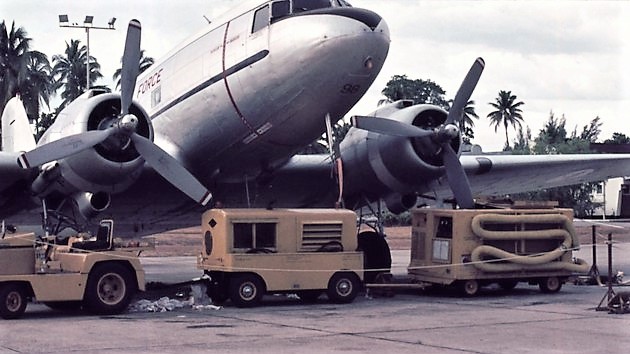 Iroquois aircraft and replace these with a single Caribou aircraft.
Seeing an immediate opportunity to make further savings on this (and get
some flying), I suggested to the Air Staff Officer (ASO - GpCapt (later
AirCdre) Stewart Back) that as we already had two experienced Caribou
pilots on staff at Butterworth, maybe we only needed a detachment
commander plus a loadmaster on staff with the Caribou and this could
save having a second pilot with the detachment as well as covering any
extra pilot availability for sickness, leave etc
Iroquois aircraft and replace these with a single Caribou aircraft.
Seeing an immediate opportunity to make further savings on this (and get
some flying), I suggested to the Air Staff Officer (ASO - GpCapt (later
AirCdre) Stewart Back) that as we already had two experienced Caribou
pilots on staff at Butterworth, maybe we only needed a detachment
commander plus a loadmaster on staff with the Caribou and this could
save having a second pilot with the detachment as well as covering any
extra pilot availability for sickness, leave etc 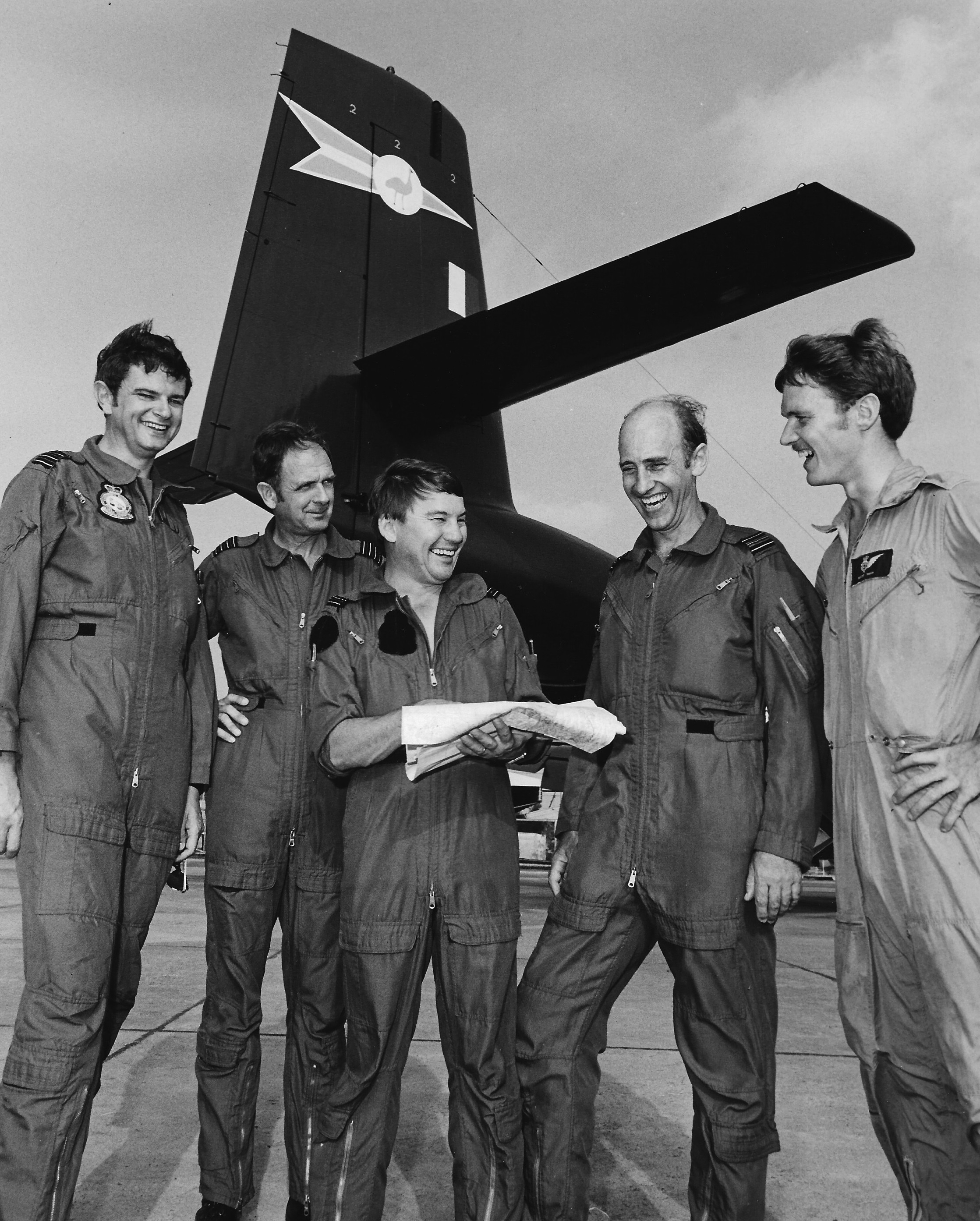
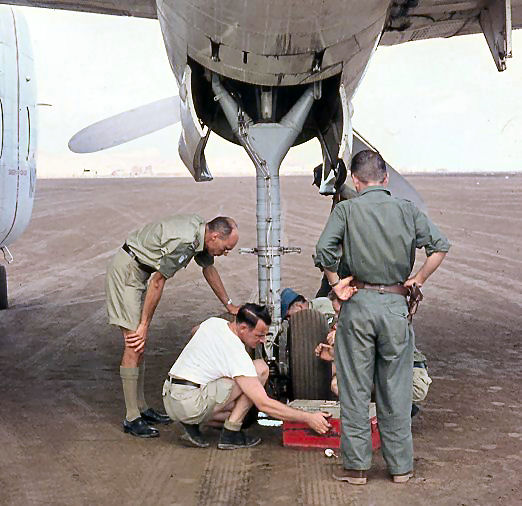 tread with the attendant danger of tyre failure. We concluded that this
was due to cold soaking on the long cruise dropping the tyre pressure.
The published Caribou main tyre pressure was 38-42psi so we boosted this
to 46psi whenever long cruise flights were planned and this largely
overcame the uneven wear problem; so, we wrote this up and sent it off
to HQSC for incorporation in the manuals. The response was swift and
vicious, demanding to know under whose authority such unauthorized
trials were conducted and insisting that the manual was to be adhered to
unless specifically authorized by HQSC. We ignored this, continued with
our practice and regretted that other operators could not benefit from
this experience. As Douglas Bader is reputed to have intoned 'rules are
for the blind obedience of fools and the guidance of wise men'.
tread with the attendant danger of tyre failure. We concluded that this
was due to cold soaking on the long cruise dropping the tyre pressure.
The published Caribou main tyre pressure was 38-42psi so we boosted this
to 46psi whenever long cruise flights were planned and this largely
overcame the uneven wear problem; so, we wrote this up and sent it off
to HQSC for incorporation in the manuals. The response was swift and
vicious, demanding to know under whose authority such unauthorized
trials were conducted and insisting that the manual was to be adhered to
unless specifically authorized by HQSC. We ignored this, continued with
our practice and regretted that other operators could not benefit from
this experience. As Douglas Bader is reputed to have intoned 'rules are
for the blind obedience of fools and the guidance of wise men'.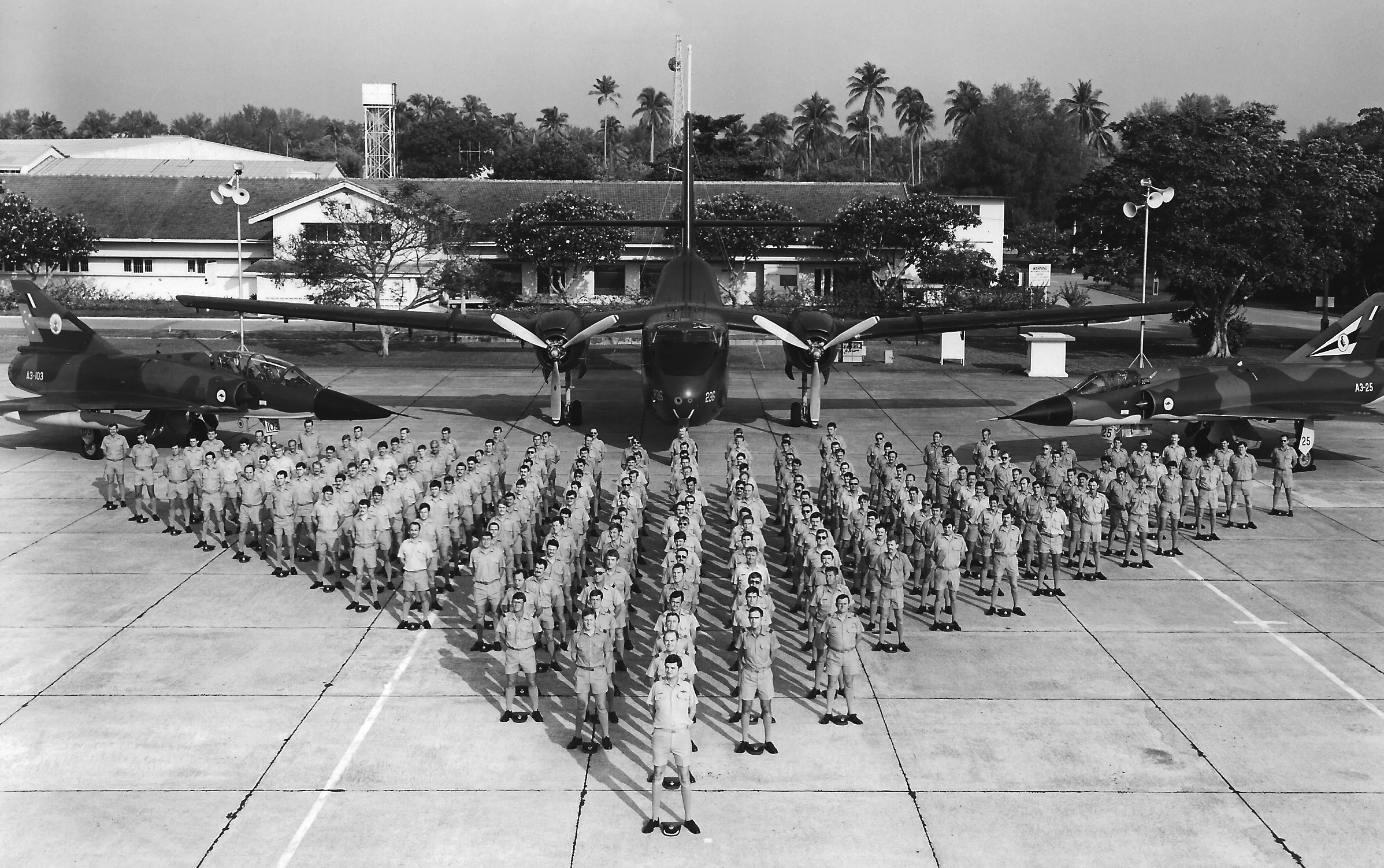
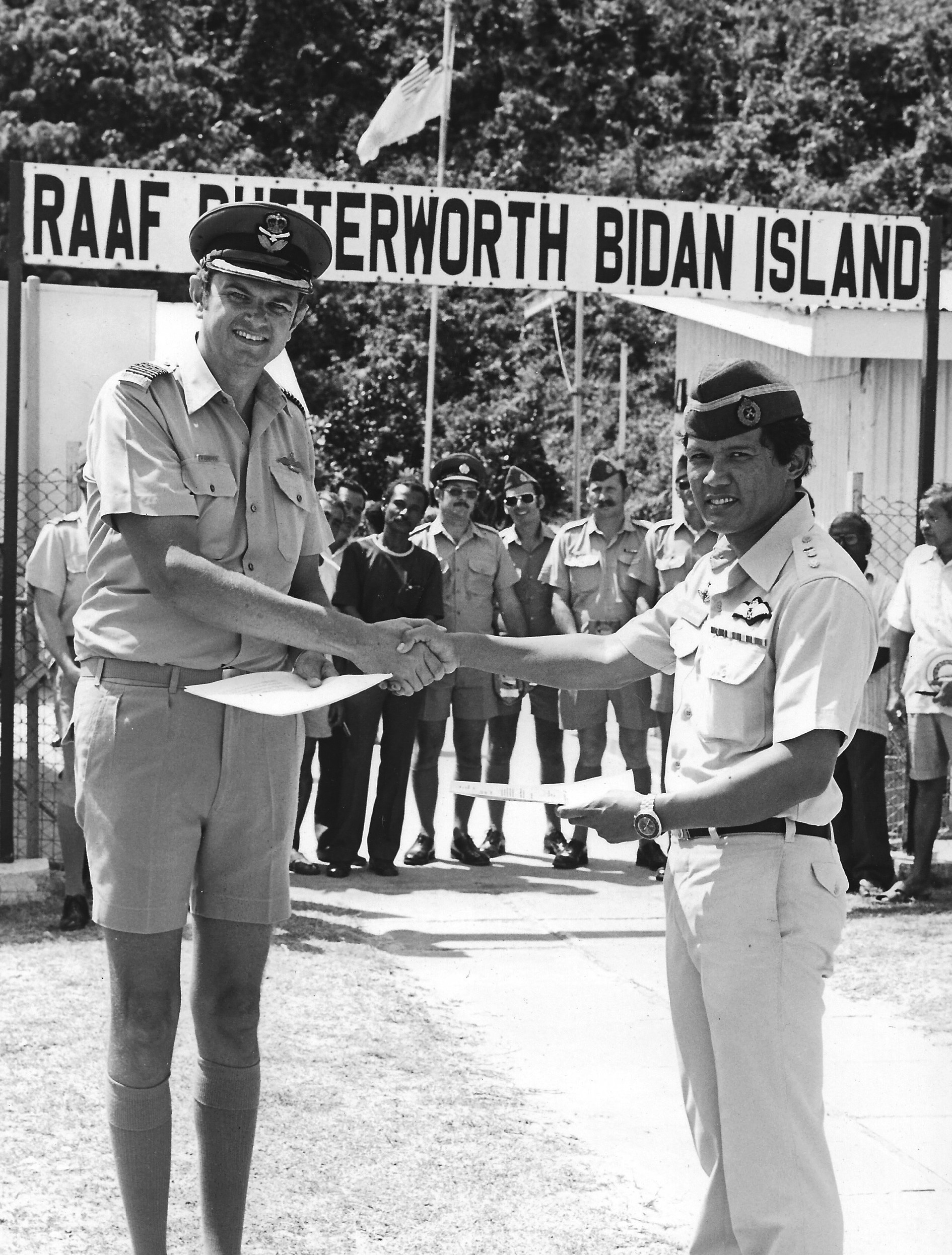
 pouring rain, using one of the 48 copies as a funnel, the two of us,
like bedraggled rats, managed to get sufficient fuel and probably water
into the car to start it. Meanwhile, I had rung Carolyn and she had also
come to the wharves to meet us at the exit. The car was unregistered,
covered in protective wax and grime and stood out like the proverbial,
so the decision was that Carolyn would lead, I would follow closely
behind and Charlie would bring up the rear so that the fact that I had
no number plates was concealed as best as possible. Of course we had to
get more fuel and because of the wax I could not use the windscreen
wipers! Maniam left us at the wharves, all smiles and indicating that he
could now have a happy Deepavali. It then took over a month to get the
paperwork corrected before the process of registration could start. Was
it worth it. Yes; but, you’d have to be a car enthusiast. Charlie and I
then enjoyed a few ‘Anchors’ when we finally got home.
pouring rain, using one of the 48 copies as a funnel, the two of us,
like bedraggled rats, managed to get sufficient fuel and probably water
into the car to start it. Meanwhile, I had rung Carolyn and she had also
come to the wharves to meet us at the exit. The car was unregistered,
covered in protective wax and grime and stood out like the proverbial,
so the decision was that Carolyn would lead, I would follow closely
behind and Charlie would bring up the rear so that the fact that I had
no number plates was concealed as best as possible. Of course we had to
get more fuel and because of the wax I could not use the windscreen
wipers! Maniam left us at the wharves, all smiles and indicating that he
could now have a happy Deepavali. It then took over a month to get the
paperwork corrected before the process of registration could start. Was
it worth it. Yes; but, you’d have to be a car enthusiast. Charlie and I
then enjoyed a few ‘Anchors’ when we finally got home.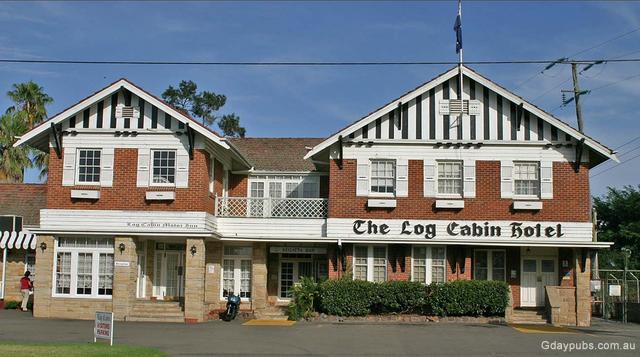 Christmas holidays in a motel wore even thinner and still there were no
prospects of accommodation. To add to this, the job required me to be
away for around a week every second or third week. During this time, our
house in Canberra became vacant so I proposed that we move into it and,
when a suitable place could be found in the Glenbrook area that we move
to it. The Personnel response from Canberra was that I would have to pay
for the removal of our goods from storage and also for any subsequent
move to Glenbrook as a removal would only be provided to the posting
location. The logic of the first bit escaped me as our goods were stored
in Canberra and while I was reluctantly prepared to accept the cost of a
subsequent removal from Canberra I demurred, on principle, against the
first. Having exhausted checking the availability of houses from anyone
posted from Glenbrook, I started contacting anyone getting a posting out
as soon as I heard about it. However, by mid Jan84 we had to make a
decision on the children’s education and decided that they return to
their boarding schools pending resolution of our future domestic
location. In mid Feb I heard of a posting, almost before the WgCdr
concerned and ‘bagsed’ first refusal on the house he was in, culminating
finally in the move to Blaxland in late Feb84. We had spent over 3
months in the Log Cabin and had long exhausted all of the eating
establishments in the Penrith area. The whole exercise had had a
significant family impact, the children were still in boarding school
and, if we moved them to the Glenbrook area they each faced a further
move at critical times in their final secondary years when my next
posting came up at the end of 1985, as I was informed that the HQOC
posting would only be for two years.
Christmas holidays in a motel wore even thinner and still there were no
prospects of accommodation. To add to this, the job required me to be
away for around a week every second or third week. During this time, our
house in Canberra became vacant so I proposed that we move into it and,
when a suitable place could be found in the Glenbrook area that we move
to it. The Personnel response from Canberra was that I would have to pay
for the removal of our goods from storage and also for any subsequent
move to Glenbrook as a removal would only be provided to the posting
location. The logic of the first bit escaped me as our goods were stored
in Canberra and while I was reluctantly prepared to accept the cost of a
subsequent removal from Canberra I demurred, on principle, against the
first. Having exhausted checking the availability of houses from anyone
posted from Glenbrook, I started contacting anyone getting a posting out
as soon as I heard about it. However, by mid Jan84 we had to make a
decision on the children’s education and decided that they return to
their boarding schools pending resolution of our future domestic
location. In mid Feb I heard of a posting, almost before the WgCdr
concerned and ‘bagsed’ first refusal on the house he was in, culminating
finally in the move to Blaxland in late Feb84. We had spent over 3
months in the Log Cabin and had long exhausted all of the eating
establishments in the Penrith area. The whole exercise had had a
significant family impact, the children were still in boarding school
and, if we moved them to the Glenbrook area they each faced a further
move at critical times in their final secondary years when my next
posting came up at the end of 1985, as I was informed that the HQOC
posting would only be for two years.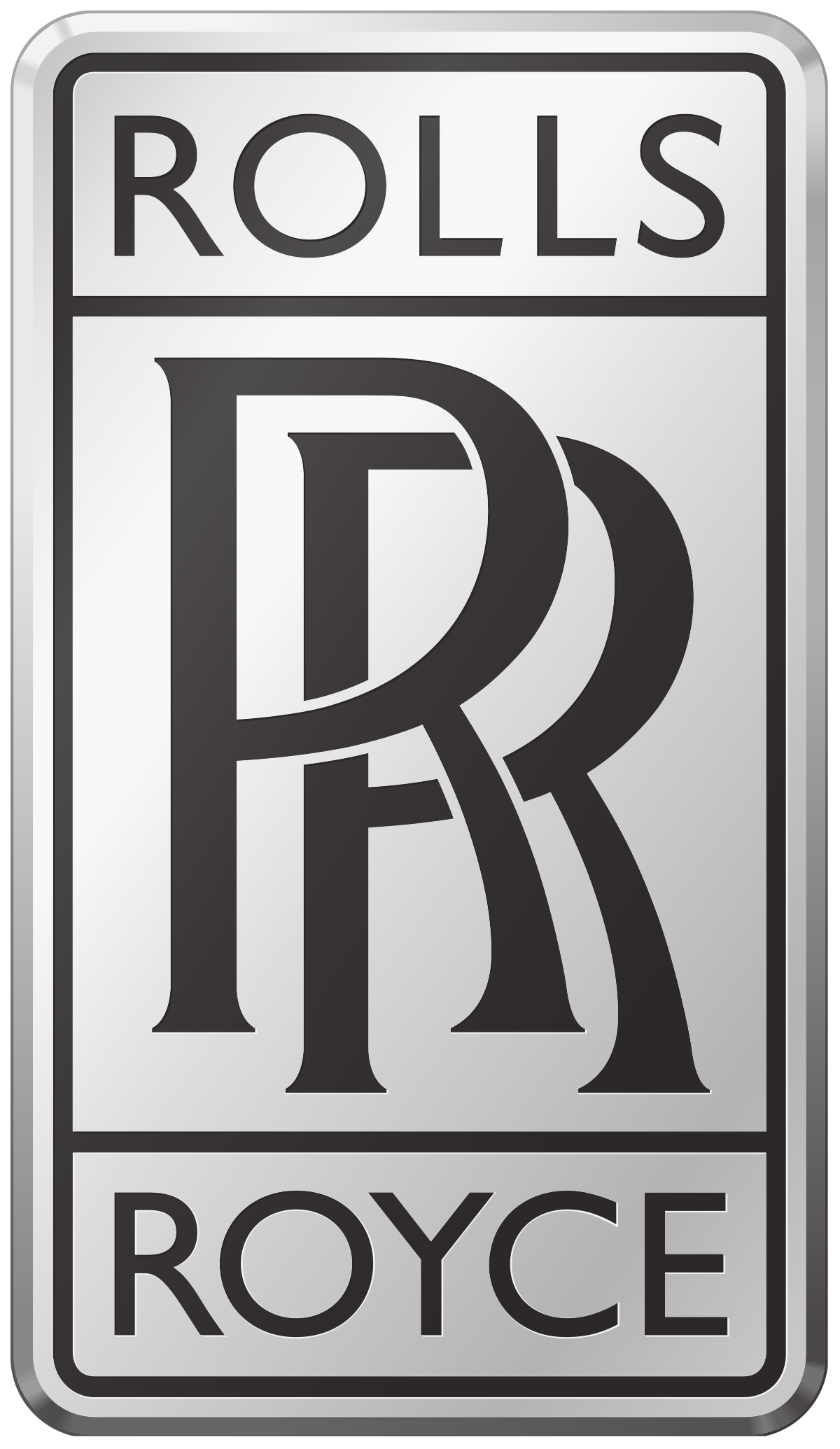 addition to knowing my history in the UK had also looked at my ability
to relate with Asians from my time in Malaysia. On questioning why an
Australian, the response was that an Australian, through the perceived
efforts of Gough Whitlam etc, would probably be better accepted in
Beijing than someone from the UK. So, I very nearly withdrew the
application to withdraw the resignation. The job had great appeal and
was well remunerated and supported by an interpreter with a car and
driver etc; but meant living in an hotel in Beijing with no prospects of
other accommodation and had to be unaccompanied, at least until the
position was well established. This also only aggravated the situation
with the children’s education. So after about a week of agonising, I
reluctantly declined the offer. I might add that my subsequent
employment by RR over a decade later was quite independent of this
approach; but, it did enlighten me to the fact that employers were
tracking individuals outside their organisations and many unadvertised
senior jobs are filled in this way.
addition to knowing my history in the UK had also looked at my ability
to relate with Asians from my time in Malaysia. On questioning why an
Australian, the response was that an Australian, through the perceived
efforts of Gough Whitlam etc, would probably be better accepted in
Beijing than someone from the UK. So, I very nearly withdrew the
application to withdraw the resignation. The job had great appeal and
was well remunerated and supported by an interpreter with a car and
driver etc; but meant living in an hotel in Beijing with no prospects of
other accommodation and had to be unaccompanied, at least until the
position was well established. This also only aggravated the situation
with the children’s education. So after about a week of agonising, I
reluctantly declined the offer. I might add that my subsequent
employment by RR over a decade later was quite independent of this
approach; but, it did enlighten me to the fact that employers were
tracking individuals outside their organisations and many unadvertised
senior jobs are filled in this way..jpg) problems, I looked at how to inspect this and given the ranks of the
senior officers in the MFO, it was decided that I should go with one
other officer and I selected Charlie Walford who was a helicopter
specialist and in line to serve a tour with the MFO. At that time, all
travel had to be by Service air unless there were exceptional
circumstances so Charlie and I went to the ME on a C130 courier but, as
this gave us insufficient time at El Gorah we then entered Israel to fly
from Tel Aviv to Marseille by civil air (El Al) to join a RAAF B707
which was delivering a number of new Squirrel helicopters to Fairbairn.
The forward journey took five days from Richmond, with overnights in
Darwin, Singapore, Male (Maldives) and Bahrain while the return journey
took us from Marseille to Brize Norton (UK), Washington, Sacramento,
Honolulu, Canberra and finally Richmond. For a week’s work at El Gorah
we were away for three weeks in order to save two single airfares. That
said, the Maldives were so impressive that Carolyn and I subsequently
spent a couple of weeks there on holiday.
problems, I looked at how to inspect this and given the ranks of the
senior officers in the MFO, it was decided that I should go with one
other officer and I selected Charlie Walford who was a helicopter
specialist and in line to serve a tour with the MFO. At that time, all
travel had to be by Service air unless there were exceptional
circumstances so Charlie and I went to the ME on a C130 courier but, as
this gave us insufficient time at El Gorah we then entered Israel to fly
from Tel Aviv to Marseille by civil air (El Al) to join a RAAF B707
which was delivering a number of new Squirrel helicopters to Fairbairn.
The forward journey took five days from Richmond, with overnights in
Darwin, Singapore, Male (Maldives) and Bahrain while the return journey
took us from Marseille to Brize Norton (UK), Washington, Sacramento,
Honolulu, Canberra and finally Richmond. For a week’s work at El Gorah
we were away for three weeks in order to save two single airfares. That
said, the Maldives were so impressive that Carolyn and I subsequently
spent a couple of weeks there on holiday.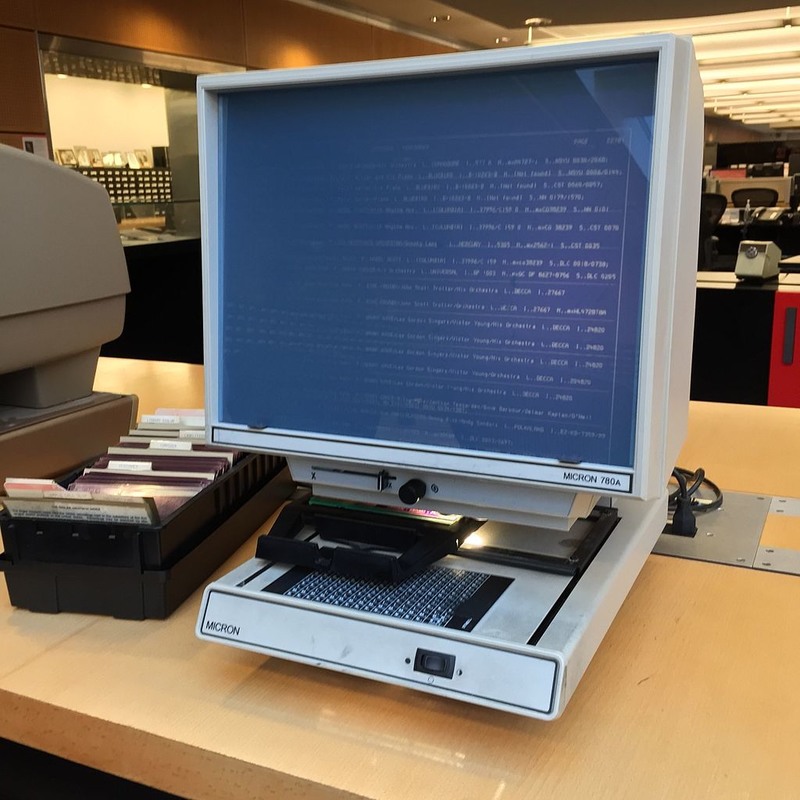 informed - looks impressive and neat! On the submarine I was informed
proudly that instead of lugging nearly half a ton of publications
onboard they now had microfiche. At the aft of the boat I found, buried
below the deck, a small workshop and, on asking the fitters how the
microfiche worked for them was informed ‘hopeless’. The electrician
advised that to look up a circuit diagram he had to go back to the ops
room, look up the fiche and then make notes of the circuit as there was
no facility for printing; so, he had his own hard copies totally
uncontrolled. Microfiche were also on the patrol boats; but, again I was
asked by a Petty Off ‘have you ever been to sea in one of these'?
Apparently in any sea the boats movement was quite violent and there was
no way that anyone could read a fiche let alone line up the magnifier.
informed - looks impressive and neat! On the submarine I was informed
proudly that instead of lugging nearly half a ton of publications
onboard they now had microfiche. At the aft of the boat I found, buried
below the deck, a small workshop and, on asking the fitters how the
microfiche worked for them was informed ‘hopeless’. The electrician
advised that to look up a circuit diagram he had to go back to the ops
room, look up the fiche and then make notes of the circuit as there was
no facility for printing; so, he had his own hard copies totally
uncontrolled. Microfiche were also on the patrol boats; but, again I was
asked by a Petty Off ‘have you ever been to sea in one of these'?
Apparently in any sea the boats movement was quite violent and there was
no way that anyone could read a fiche let alone line up the magnifier.
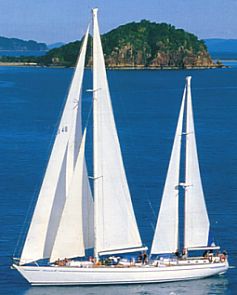 whoever was available from DTP. However, in 1988 I saw an article in
Routine Orders calling for expressions of interest for experienced crew
to sail in the Sydney-Hobart race and, throwing caution to the wind,
responded to the coordinator and found myself in mid Dec, lining up with
other contenders at Rushcutters Bay for possible selection as crew on
Anaconda 2 for the race. I had virtually no experience in large boats
(Anaconda was 84ft with a crew of 24); but, had read as much as I could,
didn’t tell any fibs and equally didn’t volunteer any negative
information. I had no idea what position on the boat I was best suited
for but, on seeing the physical size of the majority of the winch/rope
handlers quickly worked out that I was unsuited to doing that and when
asked, indicated that I had helm experience (albeit on nothing like the
size of Anaconda). We then went through a series of elimination trials
on Sydney Harbour and, to my total surprise I was selected as a helmsman
and subsequently found myself on the helm for the start of the race on
26Dec88. This was one of the most exhilarating and nerve wracking things
that I have done. Helming 84ft of boat in the turmoil of a Sydney-Hobart
start requires considerable nerve as the boats weave and criss-cross for
the start line forcing right of way and yielding repeatedly.
Notwithstanding, we had a good start within seconds of the gun and I
subsequently was offered a similar position in the 1989 race.
whoever was available from DTP. However, in 1988 I saw an article in
Routine Orders calling for expressions of interest for experienced crew
to sail in the Sydney-Hobart race and, throwing caution to the wind,
responded to the coordinator and found myself in mid Dec, lining up with
other contenders at Rushcutters Bay for possible selection as crew on
Anaconda 2 for the race. I had virtually no experience in large boats
(Anaconda was 84ft with a crew of 24); but, had read as much as I could,
didn’t tell any fibs and equally didn’t volunteer any negative
information. I had no idea what position on the boat I was best suited
for but, on seeing the physical size of the majority of the winch/rope
handlers quickly worked out that I was unsuited to doing that and when
asked, indicated that I had helm experience (albeit on nothing like the
size of Anaconda). We then went through a series of elimination trials
on Sydney Harbour and, to my total surprise I was selected as a helmsman
and subsequently found myself on the helm for the start of the race on
26Dec88. This was one of the most exhilarating and nerve wracking things
that I have done. Helming 84ft of boat in the turmoil of a Sydney-Hobart
start requires considerable nerve as the boats weave and criss-cross for
the start line forcing right of way and yielding repeatedly.
Notwithstanding, we had a good start within seconds of the gun and I
subsequently was offered a similar position in the 1989 race.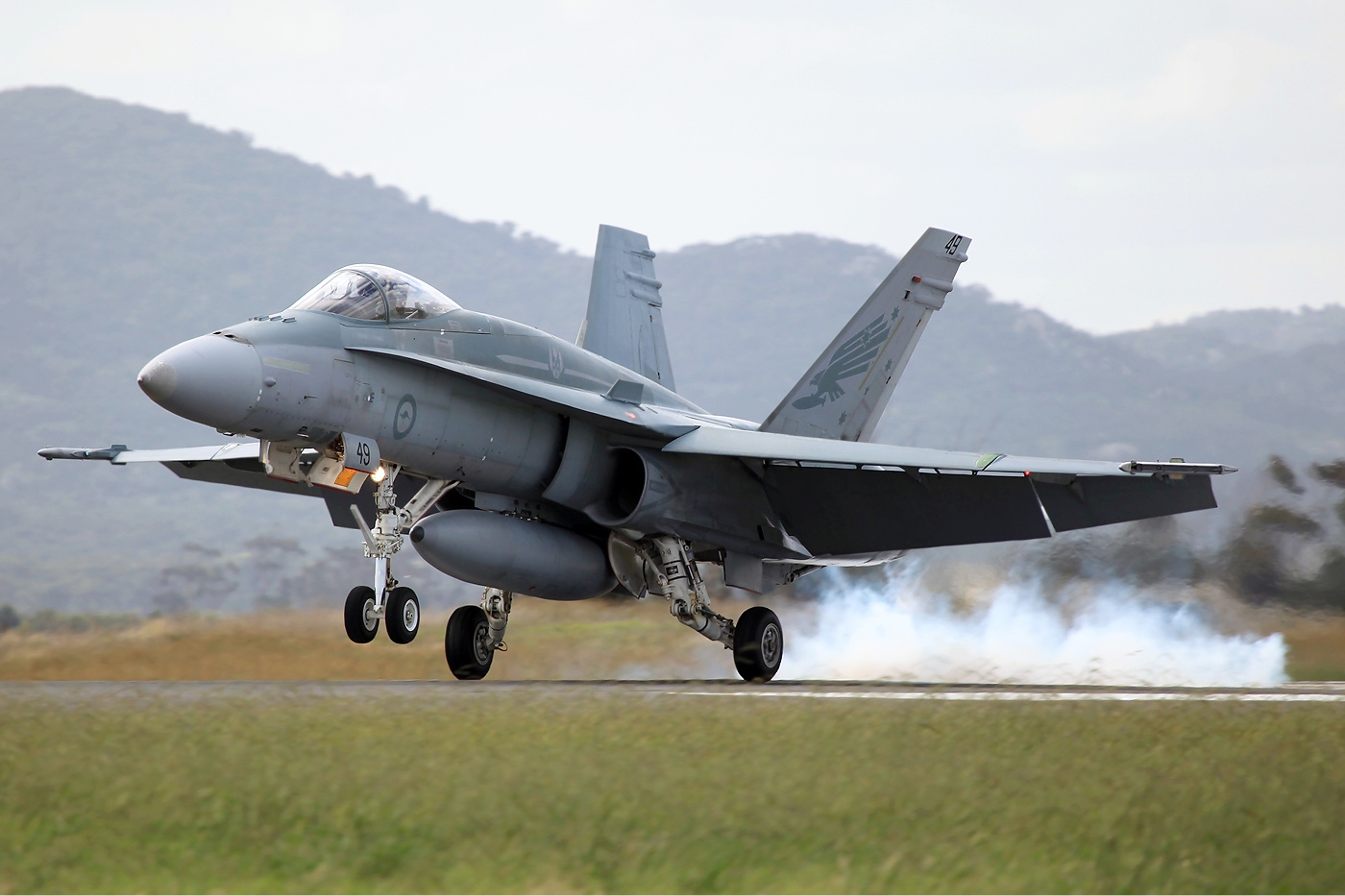
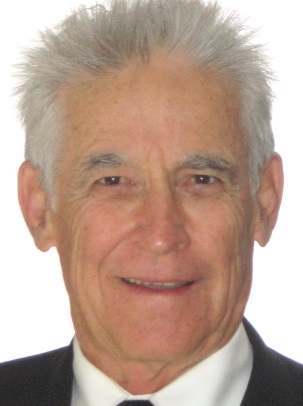 beyond its real life with significant handling limits being enforced for
fatigue. With the demise of Australian aircraft design capability
following termination of the New Basic Trainer (Wamira) a decision had
to be made on an overseas sourced replacement. In this regard DG
Operational Requirements (DGOR) pulled together an evaluation team and I
found myself with AirCdre Errol McCormack, right (later AM, CAF) and
WgCdr Ian (Thommo) Thompson (off my pilots’ course and CO designate for
77Sqn Hornets) setting off to evaluate possible solutions which
encompassed the Spanish CASA101 Aviojet, French Dassault Alpha Jet, UK
BAe Hawk, Italian Macchi MB339 and the Boeing T45 Goshawk (USN version
of the BAe Hawk). The standout was the Hawk with the MB339 being the
affordable option. In the subsequent selection, the Hawk was chosen;
however, an endearing moment of the evaluation was flying the MB339 out
of Varese in northern Italy with an Italian test pilot in the back seat
and using snow covered Mont Blanc in Switzerland as an aerobatic
reference point and an island in Lake Como for a series of ground attack
passes. It was a beautiful sunny afternoon with excellent visibility and
largely made up for the years since my last real flying at Butterworth
six years earlier.
beyond its real life with significant handling limits being enforced for
fatigue. With the demise of Australian aircraft design capability
following termination of the New Basic Trainer (Wamira) a decision had
to be made on an overseas sourced replacement. In this regard DG
Operational Requirements (DGOR) pulled together an evaluation team and I
found myself with AirCdre Errol McCormack, right (later AM, CAF) and
WgCdr Ian (Thommo) Thompson (off my pilots’ course and CO designate for
77Sqn Hornets) setting off to evaluate possible solutions which
encompassed the Spanish CASA101 Aviojet, French Dassault Alpha Jet, UK
BAe Hawk, Italian Macchi MB339 and the Boeing T45 Goshawk (USN version
of the BAe Hawk). The standout was the Hawk with the MB339 being the
affordable option. In the subsequent selection, the Hawk was chosen;
however, an endearing moment of the evaluation was flying the MB339 out
of Varese in northern Italy with an Italian test pilot in the back seat
and using snow covered Mont Blanc in Switzerland as an aerobatic
reference point and an island in Lake Como for a series of ground attack
passes. It was a beautiful sunny afternoon with excellent visibility and
largely made up for the years since my last real flying at Butterworth
six years earlier.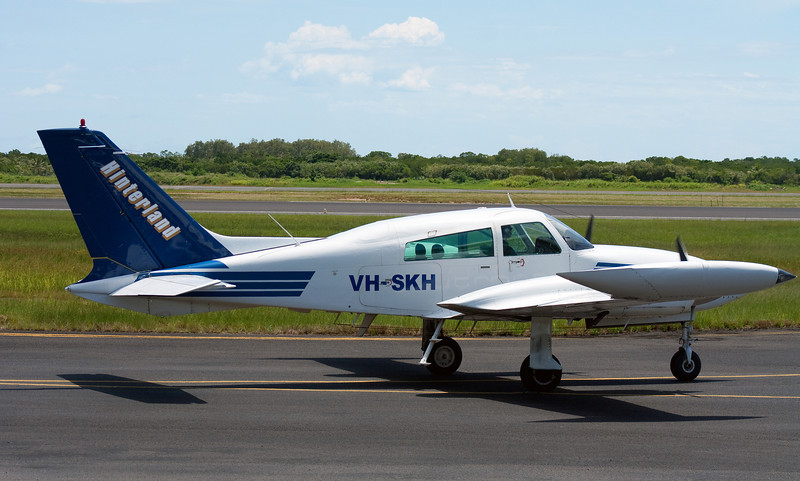 some rationality into play. Interestingly, in order to get to Tindal, I
did a quick endorsement on a long-range Cessna 310 and we flew there,
from Canberra via Birdsville in one day and similar for the return paid
for by the flying continuation scheme that Joe Owens had introduced when
I was in DTP.
some rationality into play. Interestingly, in order to get to Tindal, I
did a quick endorsement on a long-range Cessna 310 and we flew there,
from Canberra via Birdsville in one day and similar for the return paid
for by the flying continuation scheme that Joe Owens had introduced when
I was in DTP.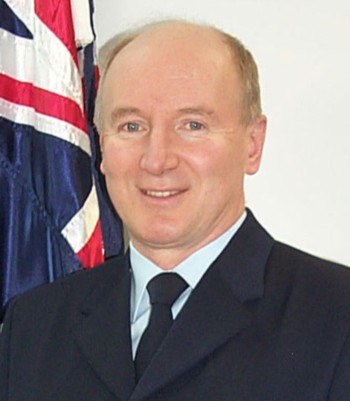 Board was a brilliant solution and this continues to today. Ops 2-6 also
provided the peak policy framework to develop the policy structure
within DGTA over the ensuing years and AirCdre Noel Schmidt (right)
brilliantly subsequently led this.
Board was a brilliant solution and this continues to today. Ops 2-6 also
provided the peak policy framework to develop the policy structure
within DGTA over the ensuing years and AirCdre Noel Schmidt (right)
brilliantly subsequently led this.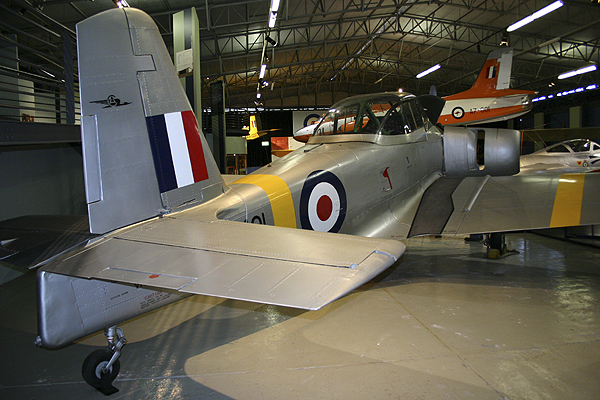 n
the CT4 Airtrainer with 1FTS and I tried to fly several times a week. I
found that after attending the morning aircrew briefing at FTS was the
best time and most of my CT4 flying was done then, allowing me to be
back in the office between 9 and 9.30am. I must say that returning to
flying was assisted greatly by the civilian flying afforded by the
continuation scheme which I have mentioned previously. Of course this
was not the only flying as the RAAF Museum had a range of aircraft and I
started first with the Winjeel (A85-401, the first production aircraft
which was subsequently, quite correctly, decided after my time to be too
historically significant to continue flying and is now on static display
in the RAAF Museum), culminating in leading a five ship (Winjeels)
formation to Richmond in Oct 1991 for the RAAFs 70th Anniversary Airshow.
Subsequently, we worked up an eight ship (5 Winjeels, 3 Harvards)
display which I led for the Point Cook open day in Nov 1991.
n
the CT4 Airtrainer with 1FTS and I tried to fly several times a week. I
found that after attending the morning aircrew briefing at FTS was the
best time and most of my CT4 flying was done then, allowing me to be
back in the office between 9 and 9.30am. I must say that returning to
flying was assisted greatly by the civilian flying afforded by the
continuation scheme which I have mentioned previously. Of course this
was not the only flying as the RAAF Museum had a range of aircraft and I
started first with the Winjeel (A85-401, the first production aircraft
which was subsequently, quite correctly, decided after my time to be too
historically significant to continue flying and is now on static display
in the RAAF Museum), culminating in leading a five ship (Winjeels)
formation to Richmond in Oct 1991 for the RAAFs 70th Anniversary Airshow.
Subsequently, we worked up an eight ship (5 Winjeels, 3 Harvards)
display which I led for the Point Cook open day in Nov 1991. 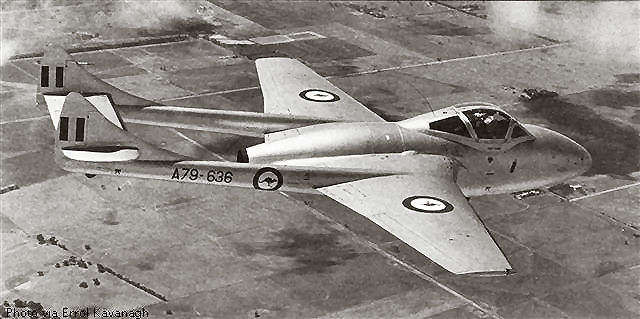
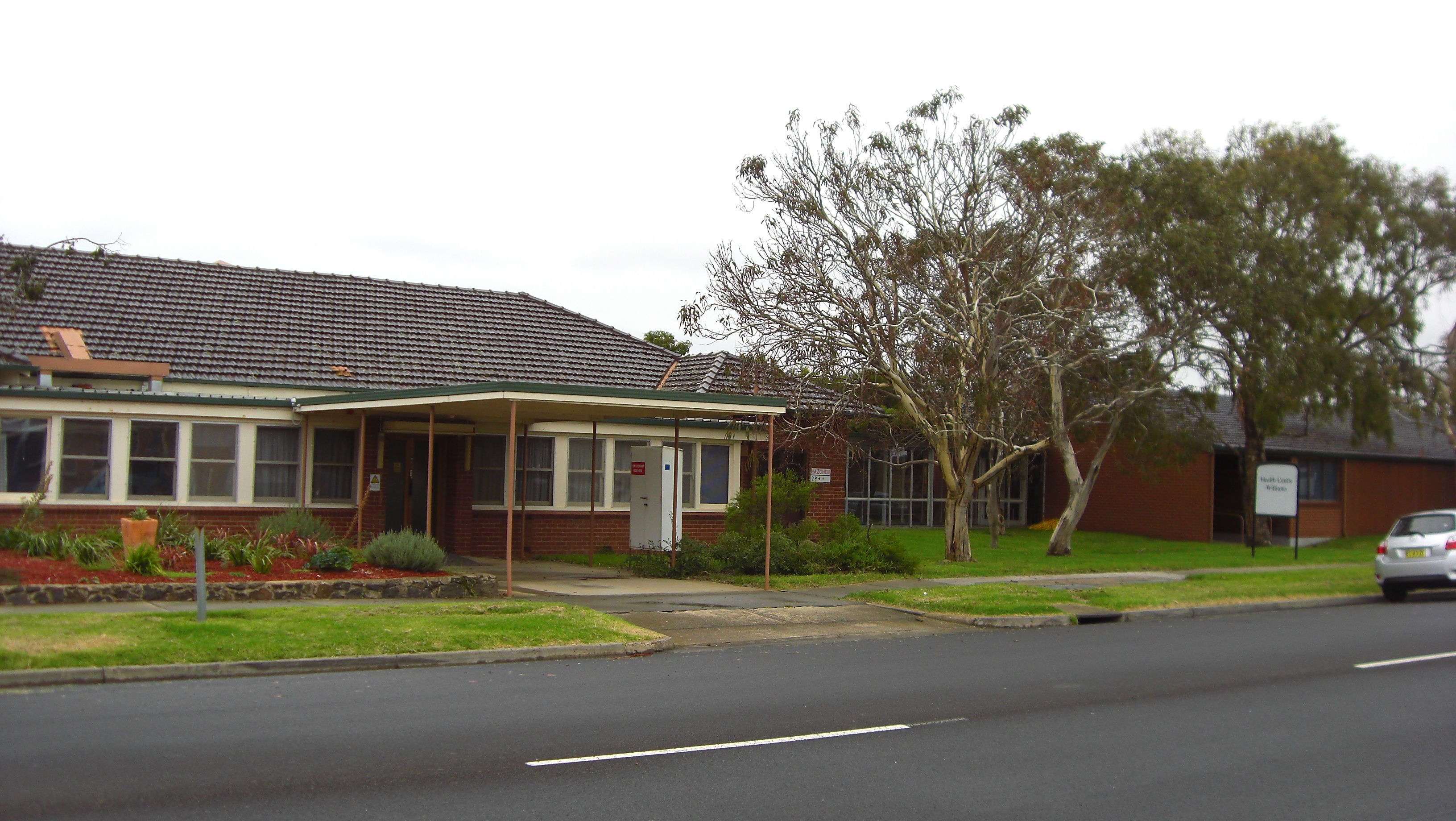
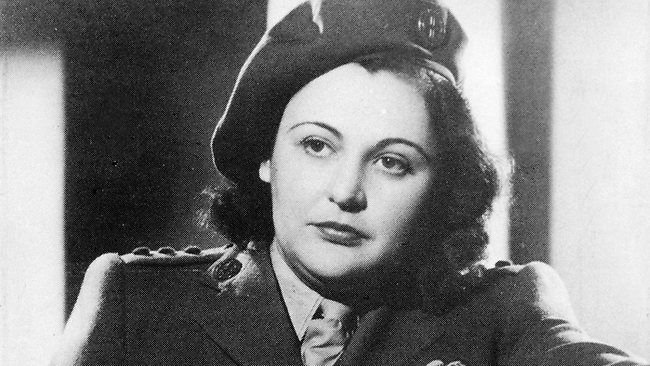 be the Dining In night in the Laverton Sergeants Mess with
be the Dining In night in the Laverton Sergeants Mess with 